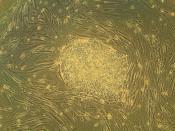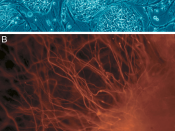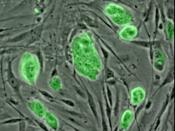With all the media coverage on stem cell research during the past election, one would think that the general public had all of the information on stem cell research. This is not the case, however. Most people believe that stem cells are cells that must be extracted from a human embryo in order to do any good in the medical community, which is only partly true. Based solely on this information, armed with religious and ethical arguments, many people have dismissed the possibility of the use of stem cells without ever looking into the facts and fallacies presented to them by the media.
So what is a stem cell? In the human body, there are 220 various kinds of cells. When a human embryo is beginning to develop, it is made mostly of rapidly dividing and multiplying stem cells. These stem cells are the basic building blocks for most types of cells found in the human body, including but not limited to blood cells and those cells found in heart tissue, brain tissue, spinal cord tissue, bone marrow, and skin tissue.
Stem cells can be coaxed into creating any number of cells that ordinarily cannot be artificially produced to the point that they actually seem to be able to regenerate human tissue.
Embryonic stem cell research has been the focus of the media in the recent past. Embryonic stem cells can be extracted from human embryos while they are still very young. In theory, the majority of these embryos could be taken from the surplus in fertility clinics. Typically, when someone goes to a fertility clinic to have in-vitro fertilization, the clinic will create many embryos for each client and freeze them because
most in-vitro fertilizations do not work on the first or second try. Once a woman has conceived,


